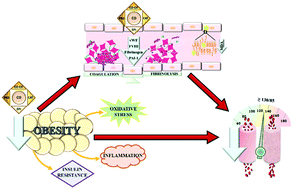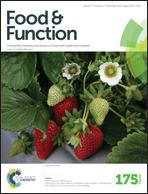The prothrombotic state associated with obesity-induced hypertension is reduced by cocoa and its main flavanols
Abstract
Background. Little is known about the effects of cocoa and its main flavanols on the prothrombotic state associated with the development of hypertension in diet-induced obesity models. Purpose. To evaluate the effects of cocoa powder, cocoa extract and their main flavanols on plasma biomarkers related to impaired coagulation and fibrinolysis and its association with hypertension and obesity-related metabolic disorders in rats fed a hypercaloric diet. Methods. Male Wistar rats were randomly assigned to 7 treatment groups (n = 7): normal diet (ND); hypercaloric diet control group (HCD); HCD + cocoa powder (CO); HCD + cocoa extract (CO-EX); HCD + (−)-epicatechin (EPI); HCD + (+)-catechin (CAT); and HCD + procyanidin B2 (PB2). Blood pressure was measured using the tail-cuff method (week 7). At the end of the experimental period (week 8), rats were sacrificed and blood samples were collected immediately for coagulation and biochemical analyses. Results. Oral administration of CO, CO-EX and their main flavanols significantly decreased plasma biomarkers related to impaired coagulation and fibrinolysis (vWF, FVIII, fibrinogen and PAI-1) in rats fed a hypercaloric diet. These effects were associated with decreased systolic and diastolic blood pressure, aortic oxidative stress (MDA levels) and improvement of dyslipidemia, insulin resistance and circulating markers of inflammation (TNF-α, IL-6 and CRP) compared to the HCD group. Conclusion. Our results showed that cocoa and its main flavanols may improve endothelial dysfunction and exert their antihypertensive effects by decreasing the prothrombotic state in rats fed a hypercaloric diet. Moreover, improvement of obesity-related metabolic disorders may also contribute to their BP-lowering effect.



 Please wait while we load your content...
Please wait while we load your content...